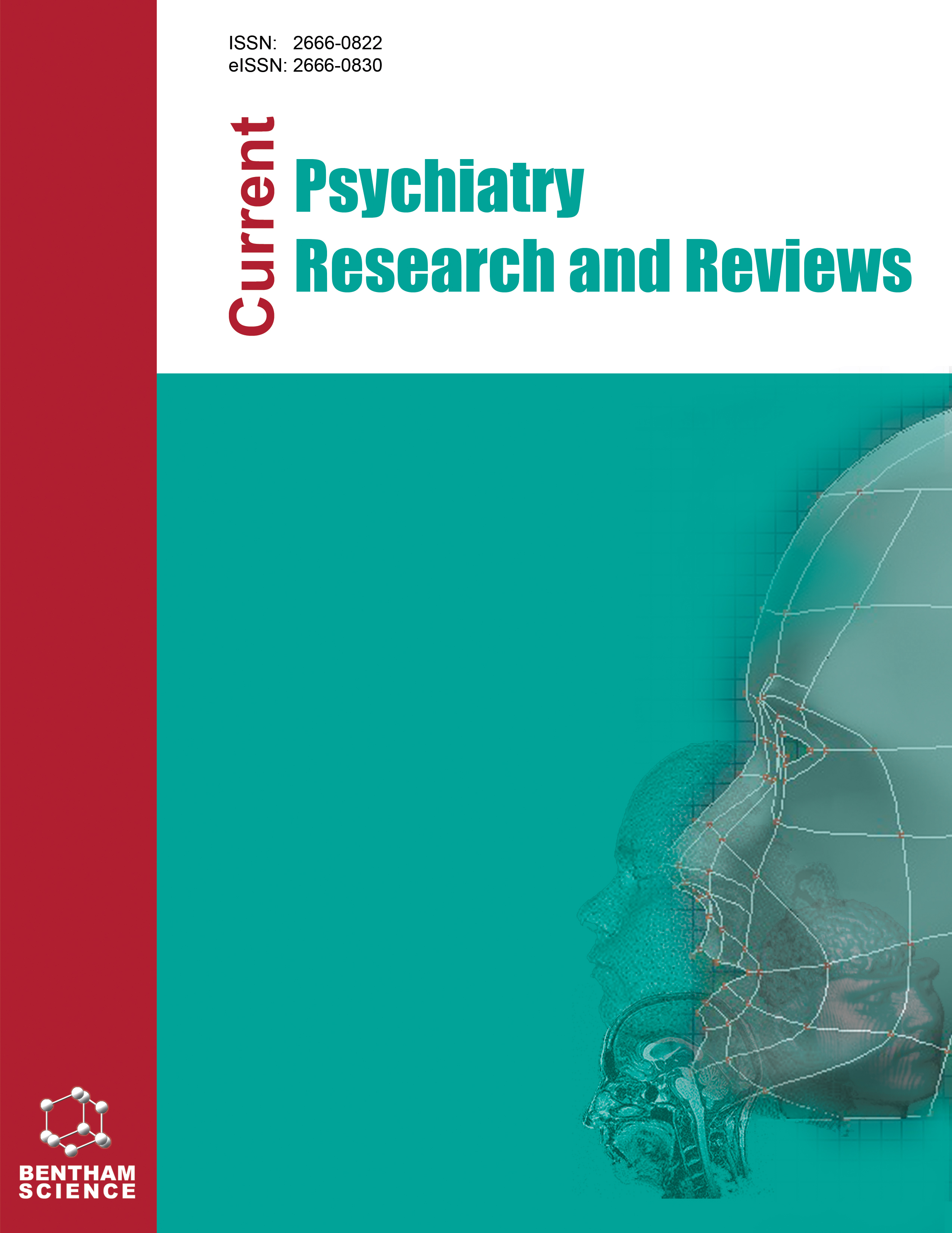- Home
- A-Z Publications
- Current Psychiatry Research and Reviews
- Previous Issues
- Volume 19, Issue 1, 2023
Current Psychiatry Research and Reviews - Volume 19, Issue 1, 2023
Volume 19, Issue 1, 2023
-
-
Response Shift as a Possible Obstacle in Assessing Perceived Quality of Life and Burden of Care in Informal Caregivers of Individuals with Schizophrenia: A Narrative Review
More LessAuthors: Jes S. Völker, Ioana V. Micluţia and Adela-Melania HangaSchizophrenia is one of the most common and devastating mental disorders. Due to the possibility of relatively robust control over clinical symptoms, the focus of care for schizophrenia patients has shifted from institutionalized to community-based outpatient treatment options. While this change in paradigm allows affected individuals to socialize and take part in everyday activities, it has also increased the burden on f Read More
-
-
-
Role of Oxidative Stress in Pathophysiological Progression of Schizophrenia
More LessAuthors: Shvetank Bhatt, Tanuj Upadhyay, CR Patil, K. Sreedhara R. Pai, Dinesh K. Chellappan and Kamal DuaBackground: Oxidative Stress (OS) is a chief contributing factor to the pathological advancement of Schizophrenia (SCZ). In recent years, OS has emerged as an important aspect in SCZ research and provides abundant opportunities and expectations for a better understanding of its pathophysiology, which may lead to novel treatment strategies. Introduction: The increased OS and formation of Reactive Oxygen Speci Read More
-
-
-
A Psychosocial Risk Assessment Tool to Predict Postnatal Depression in Women with Complicated Pregnancy
More LessIntroduction: Few studies have reported the role of psychosocial risk factors by a validated scale in predicting mental disorders in women with a complicated pregnancy. This study investigated the role of a psychosocial risk assessment tool in the prediction of postnatal depression in women with a complicated pregnancy. Methods: A prospective study was performed on pregnant women with complicated pregnancies from De Read More
-
-
-
The Racial Differences in Impact and Knowledge of COVID-19 Among Patients with Psychiatric Illnesses
More LessAuthors: Millie Nishikawa, Jeff W. Jin, Tiffany Ho, Roja Manohar, Marsal Sanches, Stefanie Cavalcanti and Hanjing WuIntroduction: COVID-19 pandemic has been associated with increased rates of depression, anxiety, and suicidal ideation. Individuals with mental illnesses are disproportionately affected by additional complex health issues. This study aims to examine the knowledge and impact of COVID-19 among patients with mental disorders at the Harris County Psychiatric Center (HCPC). Methods: A retrospective review of surveys was c Read More
-
-
-
The Relationship Between Body Image, Demographics, and Medication Adherence Among Women with Psychiatric Conditions
More LessAuthors: Isabel A. Yoon, Rosemary B. Conn and David GalarneauBackground: Given the side effect of weight gain in many psychiatric medications, a patient’s body image concerns may influence medication compliance, which can be critical in the psychiatric population. Objective: The aim of this study was to investigate whether demographic factors, including age, race, and BMI, have specific associations with body image satisfaction and medication adherence among women with sev Read More
-
-
-
The Psychological Sequelae of COVID-19 Among Disease Survivors in Argentina
More LessBackground: While more than a year has passed since the COVID-19 outbreak, it is still a growing health concern. Moreover, ample consensus exists for the presence of not only a physical but also a psychological impact of the COVID-19 pandemic. Those reported as hardest hit were individuals who had been infected with COVID-19. Survivors have exhibited a higher prevalence of psychological morbidity i.e., PTSD, de Read More
-
-
-
COVID-19 Anxiety and Washing Obsessive-compulsive Symptoms: Stress Coping Styles as a Mediator
More LessAuthors: Zahra Zanjani, Maryam Jandaghian, Seyed R. Alvani, Vajiheh Ghorbani and Sanaz JoekarBackground: The COVID-19 pandemic has significantly impacted people's psychological functioning, including how they cope with anxiety. This study aimed to assess the role of coping styles in the relationship between COVID-19 anxiety and Washing Obsessive- Compulsive Disorder (W-OCD) symptoms. Methods: A cross-sectional study was performed on 420 people living in Kashan city (Iran) from March to April, 2020. Particip Read More
-
-
-
Is Breastfeeding Duration Associated with Risk of Developing ASD?
More LessAuthors: Ensiyeh Jenabi, Mahdieh Seyedi, Saeid Bashirian and Salman KhazaeiBackground: There are few studies in the world on the duration of breastfeeding and the risk of autism. To our knowledge, no study has yet explained the association between breastfeeding duration and ASD in Iran. Aims: The present study evaluated the association between breastfeeding and the risk of ASD in offspring in the west of Iran. Methods: This case-control study was performed on 100 children aged Read More
-
-
-
The Efficacy of Psilocybin in the Treatment of Depression and Anxiety: A Meta-Analysis
More LessAuthors: Andrew T. Hodge, Suporn Sukpraprut-Braaten and Robert C. StrayhanBackground: The use of psychedelic compounds to treat psychiatric disorders has become a very significant topic of research over the past several years. Psilocybin has risen to prominence as one of the most studied among these psychedelic compounds. Multiple trials have already shown that it can be a safe and efficacious treatment for various medical conditions. This study intends to perform a meta-analysis of data reported Read More
-
Most Read This Month
Article
content/journals/cprr
Journal
10
5
false
en


